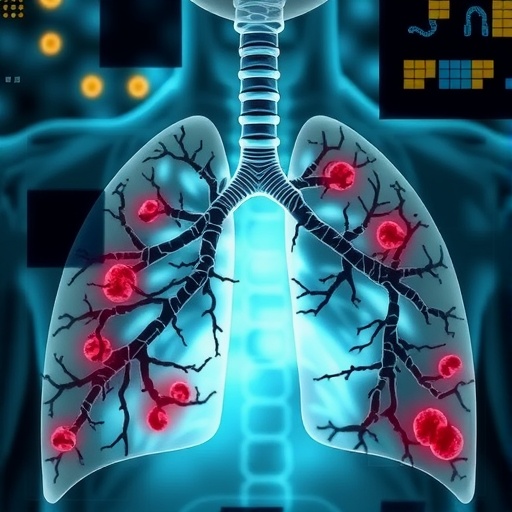In a groundbreaking advance poised to transform the management of kidney failure, a multidisciplinary team of researchers has leveraged high-throughput proteomic technologies to elucidate previously unrecognized risk factors for mortality in patients undergoing hemodialysis. This study, recently published in Nature Communications, synthesizes comprehensive proteomic data from two landmark cohorts—the Chronic Renal Insufficiency Cohort (CRIC) and the Predictors of Arrhythmic and Cardiovascular Events (PACE) study—to pinpoint molecular signatures associated with survival outcomes. The implications of these findings promise to revolutionize personalized medicine approaches in nephrology, particularly for individuals at the critical juncture of end-stage renal disease requiring renal replacement therapy.
Chronic kidney disease (CKD) culminates in kidney failure when glomerular filtration rates fall below critical thresholds, often necessitating reliance on hemodialysis to sustain life. However, the mortality rates among this population remain starkly elevated compared to the general populace, fueled by a complex interplay of cardiovascular complications, infections, and metabolic derangements. Historically, clinical risk stratification has depended heavily on demographic and biochemical variables, yet this approach has underdelivered due to the heterogeneous nature of the disease and its systemic effects. The advent of proteomics—enabling the profiling of thousands of circulating proteins simultaneously—thus offers a paradigm shift by illuminating the molecular underpinnings that drive adverse outcomes.
The researchers commenced their inquiry by performing extensive proteomic profiling on plasma samples collected longitudinally from hundreds of hemodialysis patients enrolled in the CRIC and PACE cohorts. Utilizing cutting-edge mass spectrometry and affinity-based assays, the team quantified a vast repertoire of proteins implicated in inflammation, fibrosis, oxidative stress, and cardiovascular physiology. By integrating temporal patterns of protein expression with detailed clinical phenotyping, they employed sophisticated bioinformatics pipelines to unravel correlations and potential causal pathways linked to mortality risk.
One of the most striking revelations was the identification of a distinct proteomic signature characterized by elevated levels of pro-inflammatory cytokines, markers of endothelial dysfunction, and aberrant extracellular matrix remodeling proteins. These biomarkers collectively underscored the centrality of chronic systemic inflammation and vascular injury as critical drivers of mortality in hemodialysis patients. Intriguingly, some proteins previously considered peripheral in CKD pathobiology emerged as potent prognostic indicators, challenging entrenched paradigms and inviting renewed exploration of novel therapeutic targets.
To ensure the robustness and generalizability of their findings, the scientists applied rigorous validation techniques across both CRIC and PACE datasets. This cross-validation mitigated cohort-specific biases and reinforced the reproducibility of the identified risk profiles. Additionally, advanced machine learning models distilled the proteomic data into predictive algorithms that outperformed traditional clinical risk scores, signaling imminent translational applications in real-world hemodialysis settings.
Beyond mortality prediction, the proteomic insights illuminated heterogeneous patient subpopulations with distinct pathophysiological trajectories. This stratification offers tantalizing possibilities for tailored interventions, ranging from anti-inflammatory strategies to modulation of fibrotic pathways. The heterogeneity also emphasizes the inadequacy of “one-size-fits-all” treatment regimens and bolsters the impetus to develop precision nephrology frameworks grounded in molecular phenotyping.
Mechanistically, the dysregulated proteins delineate a nexus of maladaptive immune activation, oxidative damage, and impaired vascular homeostasis. This triangulated pathomechanism elucidates why conventional therapies falter in substantially reducing mortality risks and points to the necessity of combinatorial or adjunctive therapeutic modalities. It also explains the persistent cardiovascular burden borne by kidney failure patients, as endothelial injury and fibrosis directly contribute to atherosclerosis and arrhythmogenic substrates.
Importantly, the temporal dimension offered by serial proteomic sampling unveiled dynamic shifts in risk profiles that precede clinical deterioration. This temporal granularity heralds the possibility of proactive monitoring, enabling early therapeutic modulation before irreversible complications ensue. Such anticipatory clinical management could markedly improve long-term survival and quality of life for this vulnerable population.
The study further underscores the inherent complexity of kidney failure, which is not merely a uremic toxin accumulation syndrome but a systemic disorder involving intertwined molecular networks. By charting these proteomic landscapes, the research redefines kidney failure as an active biological process with evolving phenotypes rather than a static condition, thereby opening new avenues for understanding disease progression.
In addition to proteomic markers, the integrated analysis hinted at potential gene-protein interactions and epigenetic modifications that might influence protein expression patterns. These multilayered associations advocate for future investigations employing multi-omics strategies to capture the full spectrum of molecular alterations driving mortality risk.
Notably, the researchers pointed out the challenges of translating proteomic discoveries into clinical tools, particularly concerning assay standardization, cost-effectiveness, and integration with existing workflows. Nevertheless, they remain optimistic that ongoing technological advances and decreasing costs of mass spectrometry will facilitate broad adoption in nephrology clinics.
This effort represents one of the most comprehensive explorations of hemodialysis-related mortality risk to date, combining epidemiology, proteomics, and computational analysis. It sets a new benchmark for future studies aiming to untangle the complexity of chronic diseases through systems biology approaches.
Ultimately, these findings serve as a clarion call to the nephrology community to embrace molecular precision methodologies that promise to reshape prognostication and therapeutic strategies in kidney failure. By identifying actionable biomarkers that flag patients at imminent risk, clinicians can tailor interventions more effectively and potentially mitigate the staggering mortality burden faced by hemodialysis patients.
While much work remains before proteomic profiling becomes a routine clinical tool, the trail blazed by this study heralds a future where “liquid biopsies” inform dynamic, personalized treatment plans. The researchers envision a paradigm where periodic molecular assessments complement clinical evaluations to guide decision-making and improve outcomes.
As the field advances, the integration of proteomic data with electronic health records, wearable bio-sensors, and patient-reported outcomes will enable nuanced patient management in real time. This confluence of technologies may soon enable nephrologists to detect early signals of deterioration, optimize dialysis prescriptions, and prevent complications before they arise.
In summary, the proteomic dissection of mortality risk in hemodialysis patients uncovered by the CRIC and PACE investigations marks a watershed moment in nephrology research. It exposes a rich tapestry of molecular pathways that drive the devastating consequences of kidney failure and augurs a future defined by molecularly guided care that improves survival and patient well-being.
Subject of Research: Mortality risk factors in kidney failure patients undergoing hemodialysis, identified via proteomic analysis.
Article Title: Risk factors for mortality in patients with kidney failure on hemodialysis identified by proteomic analysis of CRIC and PACE studies.
Article References:
Ren, Y., Segal, M.R., Shafi, T. et al. Risk factors for mortality in patients with kidney failure on hemodialysis identified by proteomic analysis of CRIC and PACE studies. Nat Commun (2025). https://doi.org/10.1038/s41467-025-66763-z
Image Credits: AI Generated
Tags: cardiovascular complications in hemodialysischronic kidney disease researchChronic Renal Insufficiency Cohort studyend-stage renal disease managementhigh-throughput proteomic technologiesmolecular signatures of survival outcomesmortality risk factors in kidney failurepersonalized medicine in nephrologyPredictors of Arrhythmic and Cardiovascular Eventsproteomic analysis in hemodialysisproteomics and patient outcomesrenal replacement therapy insights





